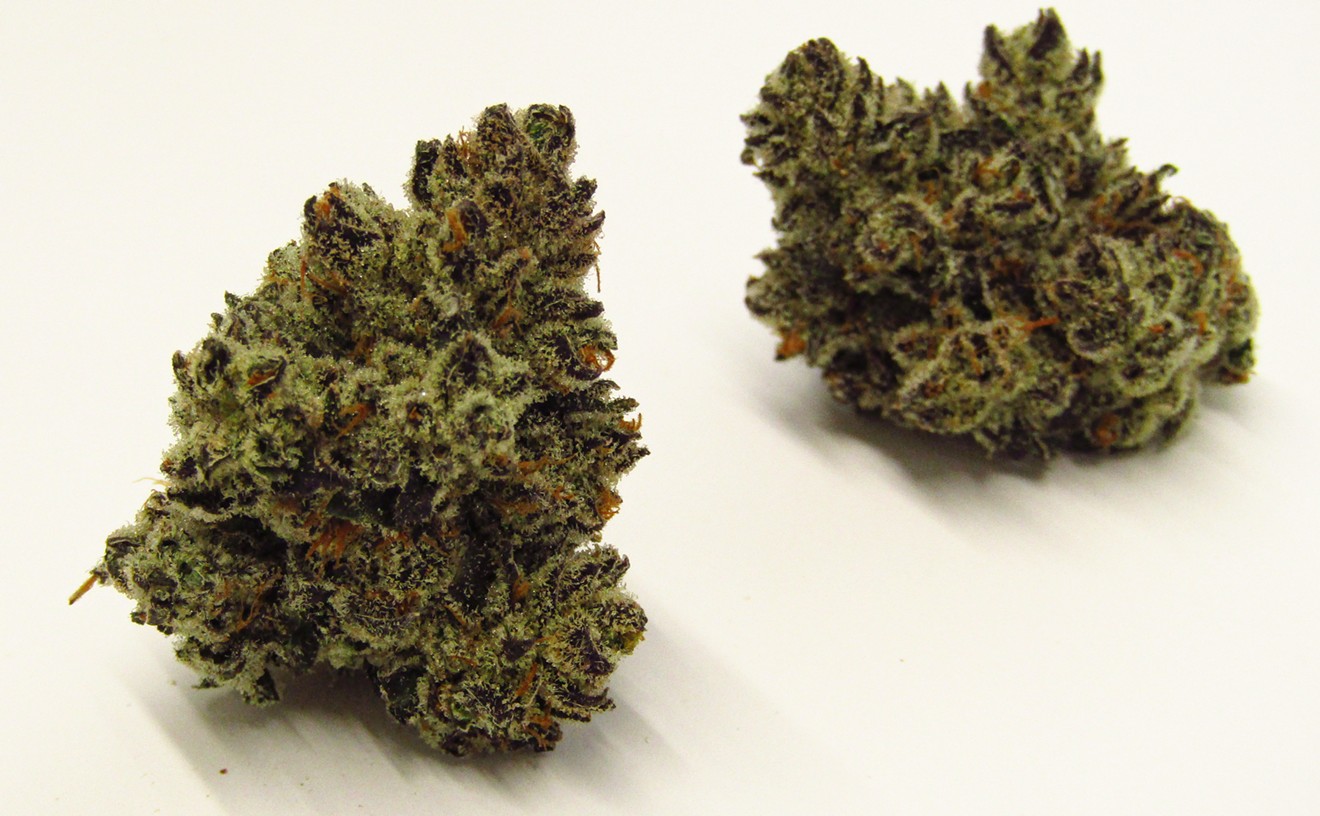According to the MED, Colorado's legal marijuana market demanded 665,134 pounds of pot in 2017, accounting for over $1.5 billion in total earnings. That's a 31 percent rise from 2016, the study shows, and a 130 percent rise since 2015, when the MED began tracking the data.
Cultivators supplied about 750,000 pounds of marijuana in 2017, the MED says, while industry consumers smoked, vaporized and ingested around 460,000 pounds of pot, according to federally funded surveys by the Substance Abuse and Mental Health Services Administration, National Survey on Drug Use and Health, and the Colorado Behavioral Risk Factor Surveillance System.
The discrepancy in marijuana cultivated and marijuana sold was largely attributed to a 72,000-pound inventory of marijuana that businesses held on to at the time of the survey, as well as destruction of marijuana that failed quality-assurance standards, inventory shrinkage and losses during harvest, trimming and extraction processes.
And what about the wide difference between marijuana demanded by consumers and marijuana that was actually consumed in Colorado? The report says that disparity is caused by several factors:
- At-home consumer inventory
- Purchases that are consumed out of state
- Demand from the under-21 population
- Under-estimated demand or waste by visitors
- The inclusion of edible and concentrate products that were not fully considered in federal surveys
Other interesting findings from the MED's annual report include rising potency trends among flower and concentrates. In 2014, the average amount of THC found in marijuana flower sat at 16.4 percent, according to MED-approved testing labs, while concentrates averaged out at 56.6 percent THC. In 2017, the average bud tested out at 19.6 percent THC, while the average concentrate rose to 68.6 percent.
The MED also notes that the industry's top ten operators control over 23 percent of the total market, which it touts as sign of a "highly competitive market."
None of that competition was at play in the east and southeast regions of Colorado, where Baca, Bent, Cheyenne, Crowley, Douglas, Elbert, Kiowa, Kit Carson, Lincoln and Prowers counties all ban retail marijuana sales. However, the counties with the highest rates of adult sales per capita in 2017 sat right next to many of those communities, with Huerfano, Las Animas and Otero counties — not Denver County – leading the state in that category.
The report was authored with the help of of the Marijuana Policy Group and University of Colorado Boulder Leeds School of Business. According to MPG co-founder Adam Orens, there were a number of "firsts" in the reports. “Colorado is the first state to use inventory tracking data to understand market dynamics; the first to use flower equivalent measures; and the first to compare supply, demand and consumption to monitor regulatory performance," he says in a statement.
Find the entire report below. Upda













